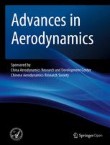Advances in Aerodynamics is affiliated with the with Computational Aerodynamics Institute, China Aerodynamics Research and Development Cernter and Chinese Aerodynamics Research Society.
Numerical simulation and analysis of a ducted-fan drone hovering in confined environments
Ducted-fan drones are expected to become the main drone configuration in the future due to their high efficiency and minimal noise. When drones operate in confined spaces, significant proximity effects may int...

 ...
...